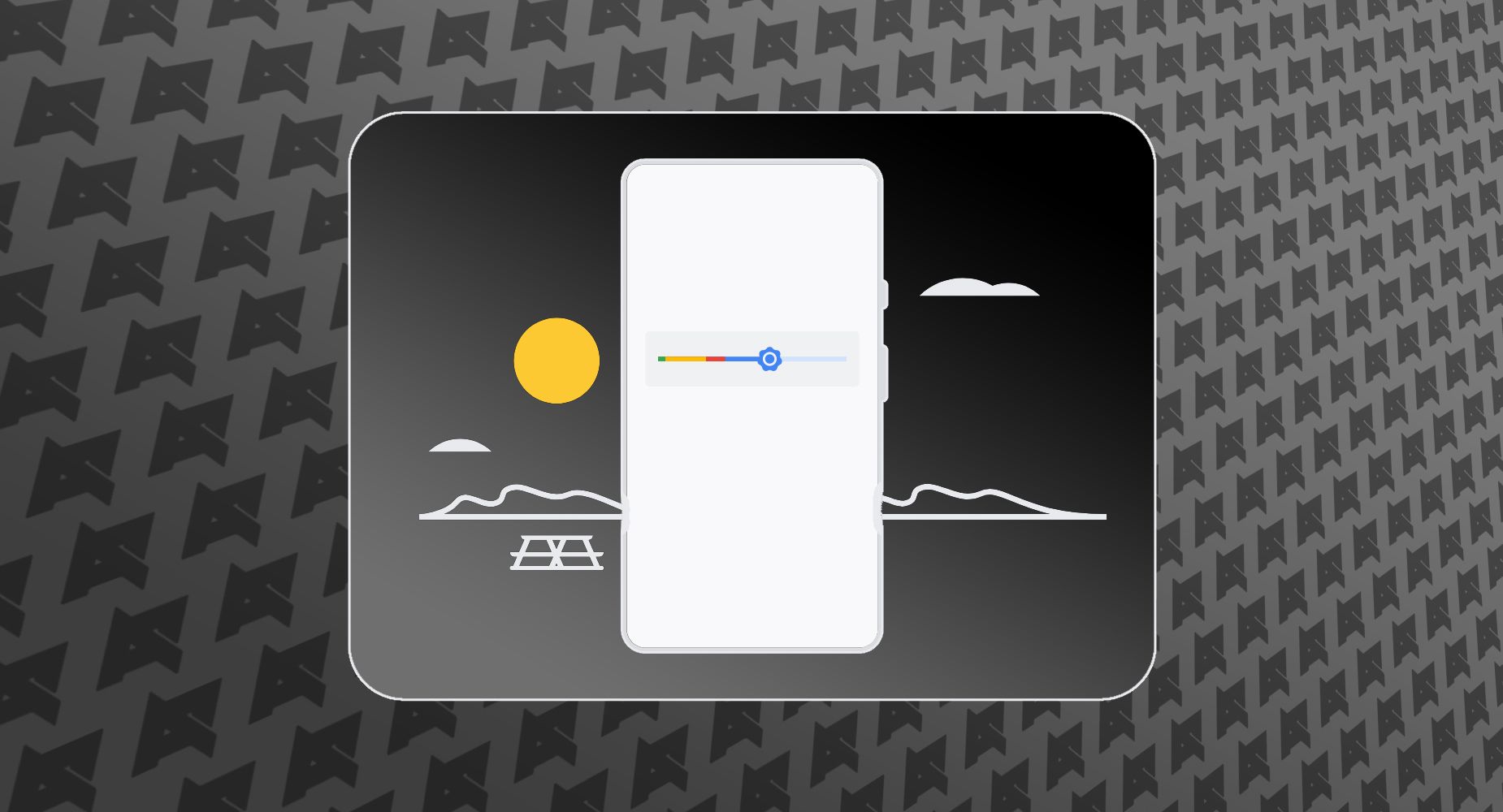Adaptive brightness on Android phones helps with screen visibility when outdoors for a selfie or texting indoors. It automatically matches your display with real-world light levels. In bright environments, your screen increases lighting and reduces it in darker settings to preserve battery life and prevent eye discomfort. If you own a shiny new Samsung Galaxy S24 flagship, you have more room to manipulate your screen's light. The display peaks at 2,600 nits, surpassing previous models in the lineup.
Adaptive brightness relies on in-built sensors, which can be overly sensitive and smart. It periodically adjusts based on how you interact with the brightness slider in Quick Settings. Sometimes, your device's screen dims or becomes too bright, even with consistent lighting conditions. Resetting the feature usually resolves the problem, and here's how to do it.
How to reset Adaptive brightness on Android phones and tablets
Resetting Adaptive brightness to its default state is a useful troubleshooting step when other light methods don't work. It forces the feature to recalibrate and adapt to your preferences or ambient lighting conditions from scratch.
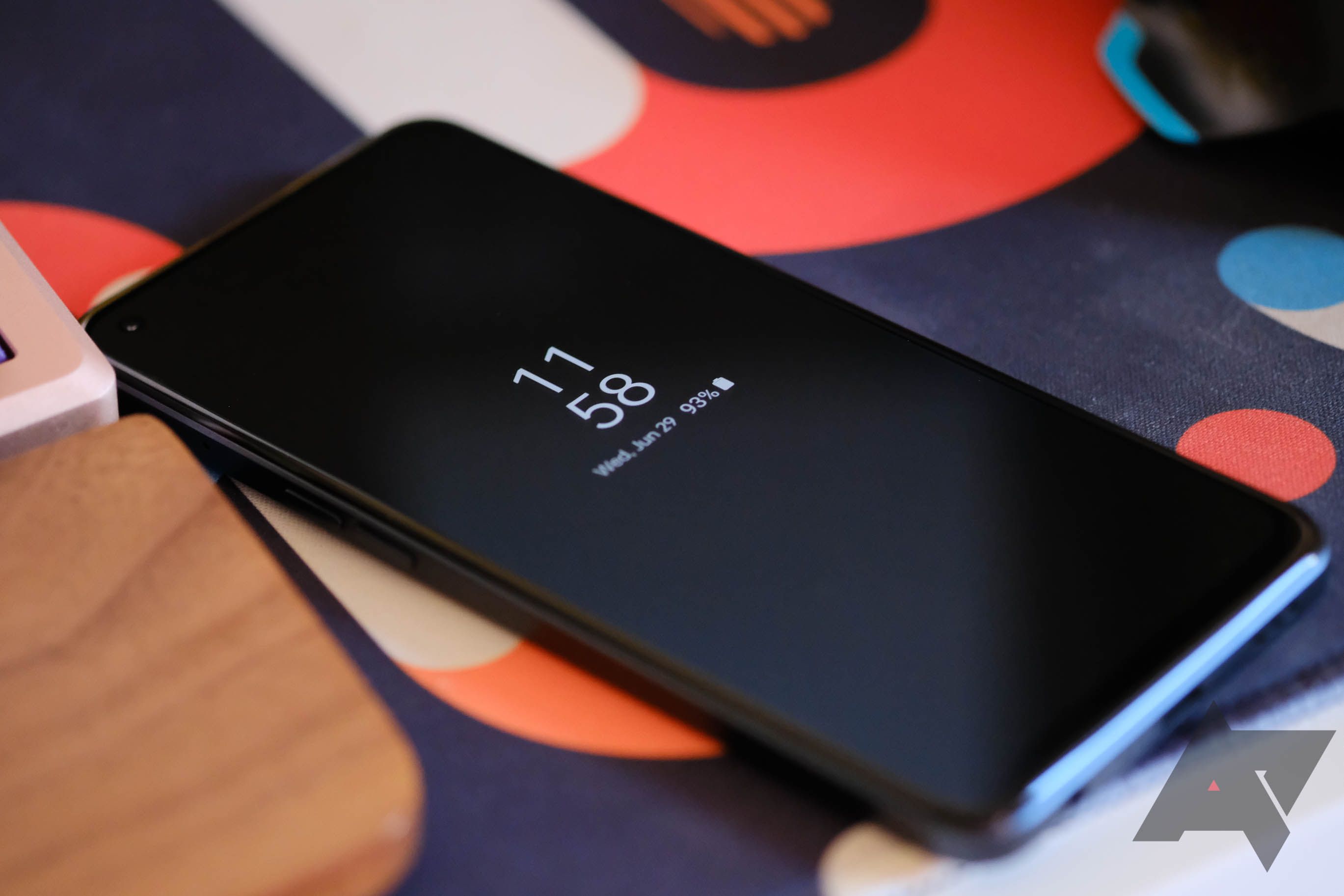
How to turn Android's Always On Display on or off
You can even customize your phone's Always On Display with stickers and GIFsAdaptive brightness is part of the Device Health Services app, so you'll find the reset button within the app's info page in the settings menu. Some Google Pixel devices and select manufacturers don't provide this dedicated button. You can clear the app's cache and storage data instead. Use the following steps to reset the feature:
- Go to Settings > Apps.
-
Scroll through or search your app list for Device Health Services. Then tap it.
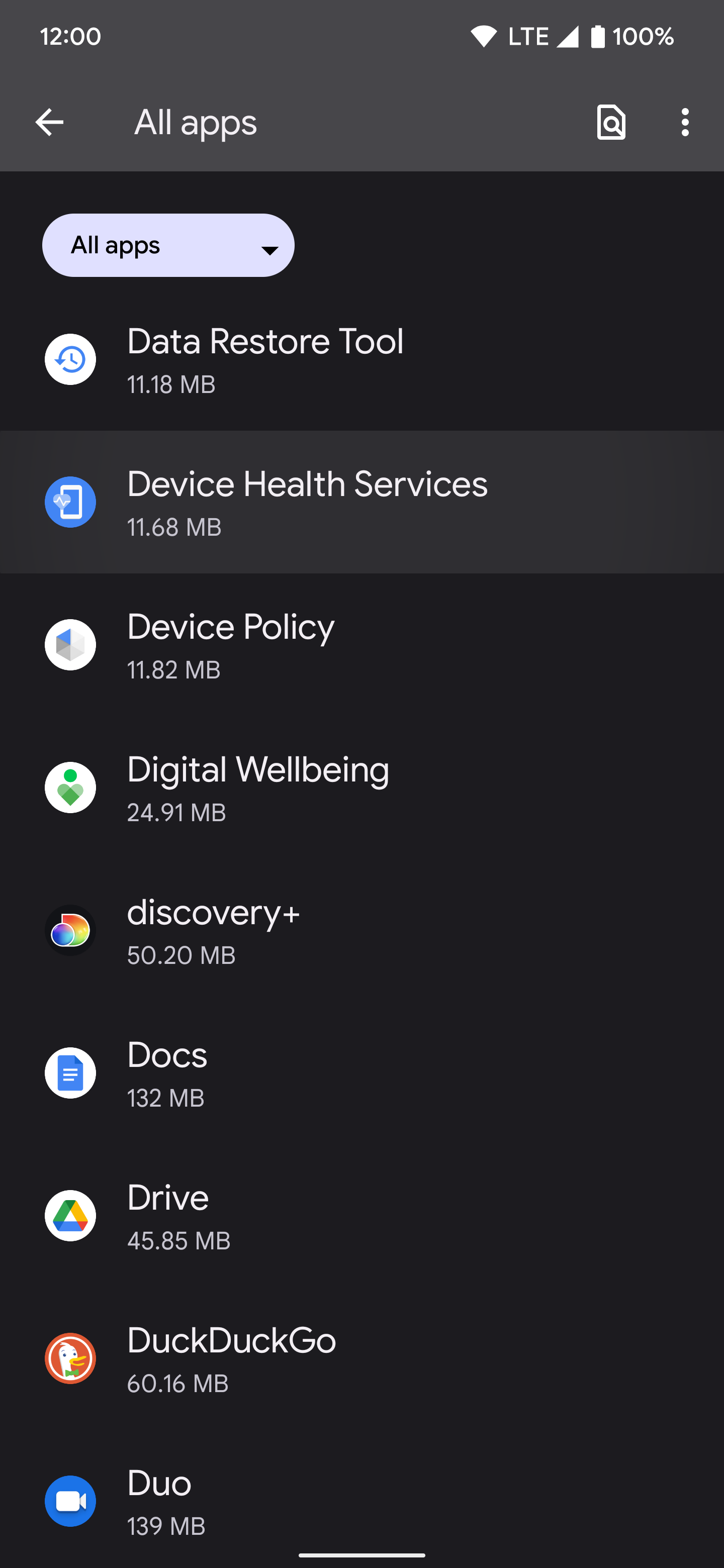
- Tap Storage & cache.
- Select Manage space.
- Tap Reset adaptive brightness.
-
Select OK to confirm and save your choice. The feature reverts to the factory default settings.
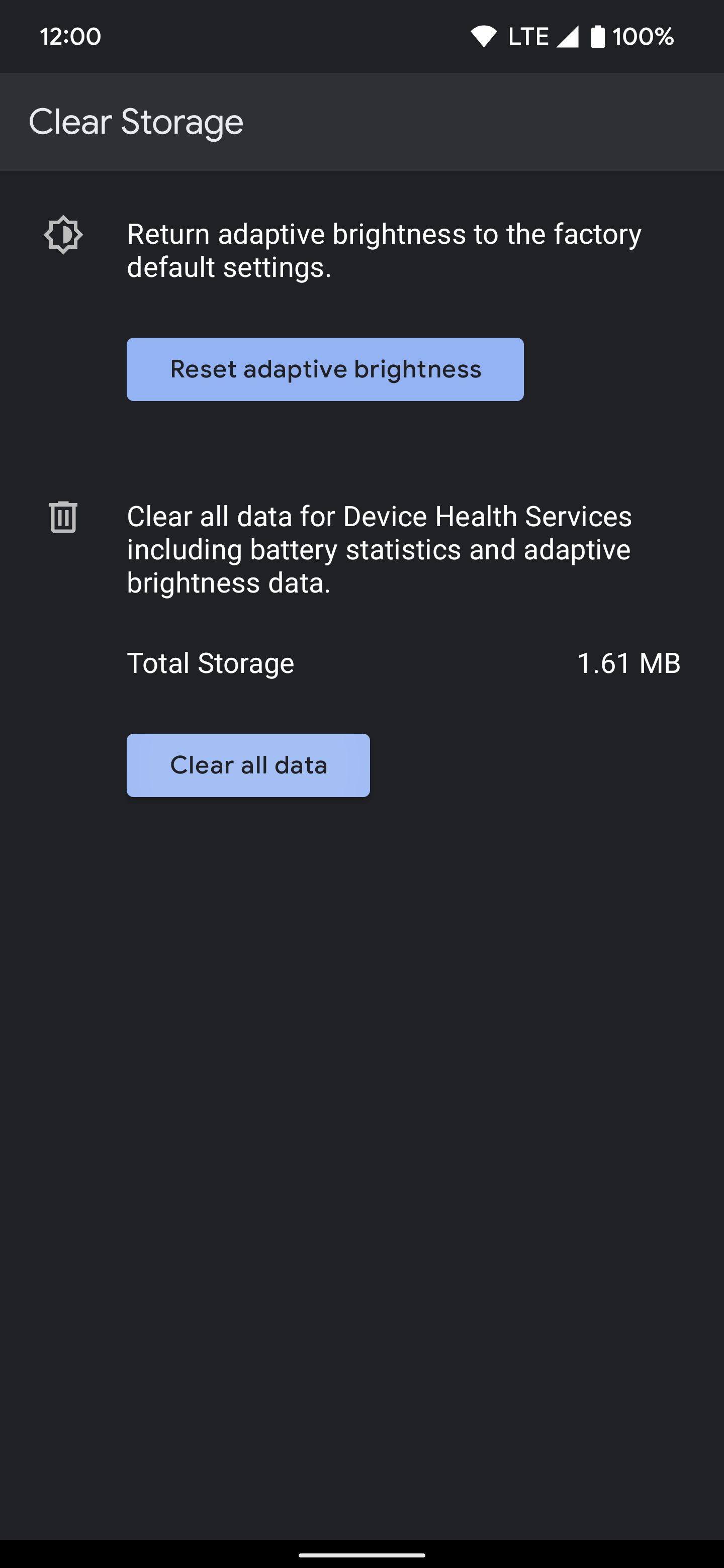
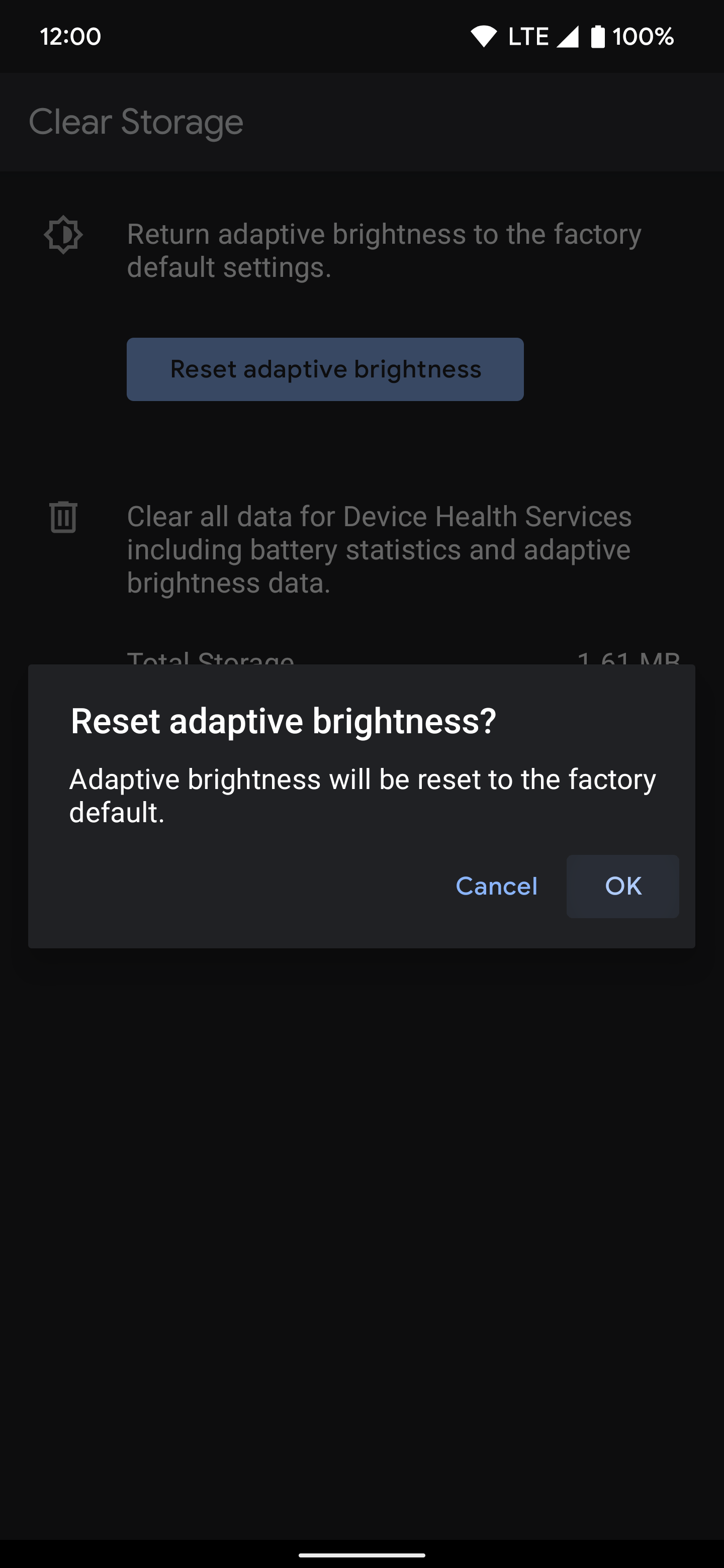
Clear your Adaptive brightness data
If you can't find the reset method for Adaptive brightness, or it doesn't work, clear the cache and storage data for Device Health Services. Navigate to your app list and select Device Health Services. Instead of tapping the Reset adaptive brightness button, tap Clear all data and press OK to confirm the action.
You'll want to consider this option as a last resort. Everything in the Device Health Services app, including battery statistics, is deleted when you tap the button.

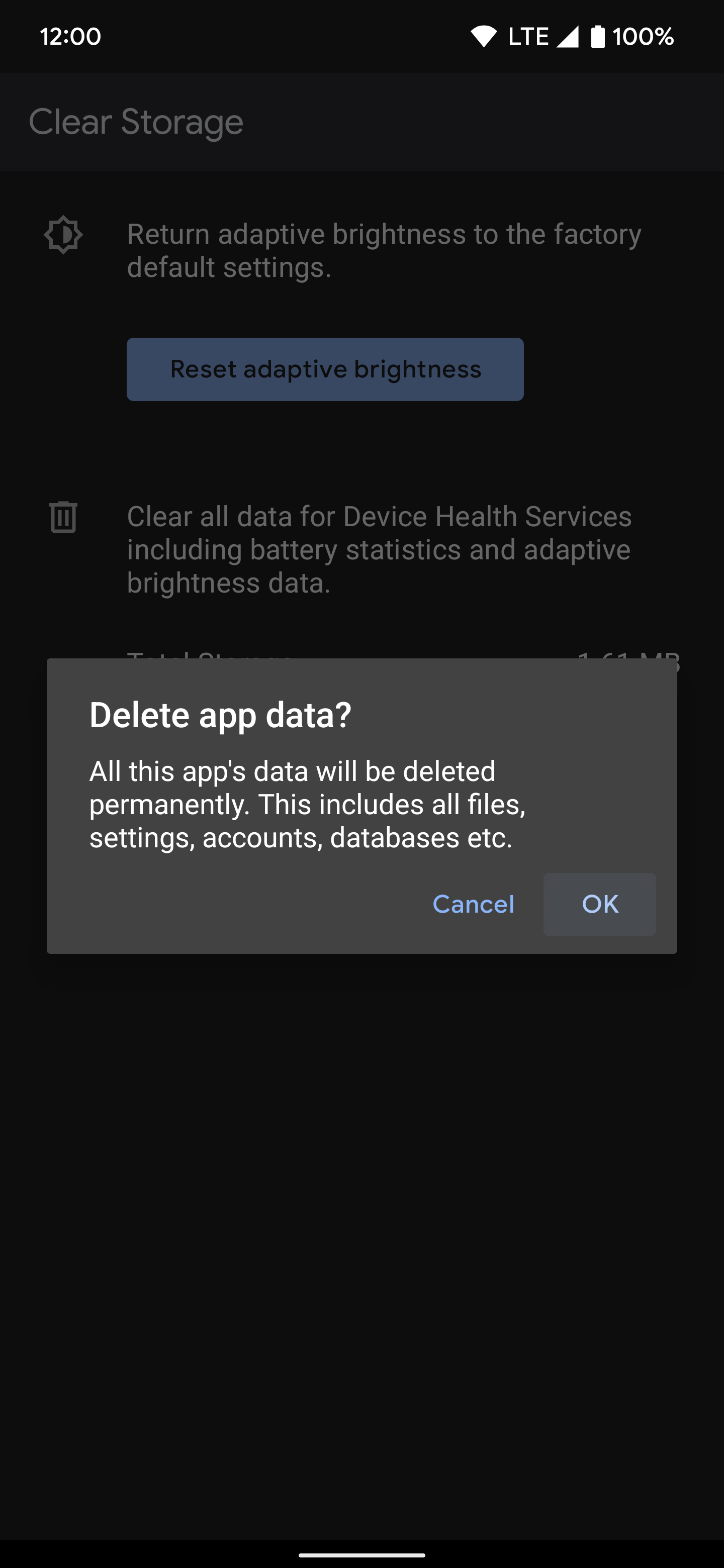
How to turn off Adaptive brightness
Adaptive brightness may frustrate with inconsistent adjustment to changing light conditions. You can turn it off and do it yourself. This way, you experience a fixed and stable screen brightness level. If you own a Samsung device, you can turn off the feature from the Quick Settings panel. Google Pixels and other models may require you to enter your settings menu.
Turn off Adaptive brightness from the Android settings menu
- Go to Settings > Display.
-
Flip the toggle next to Adaptive brightness to the off position.
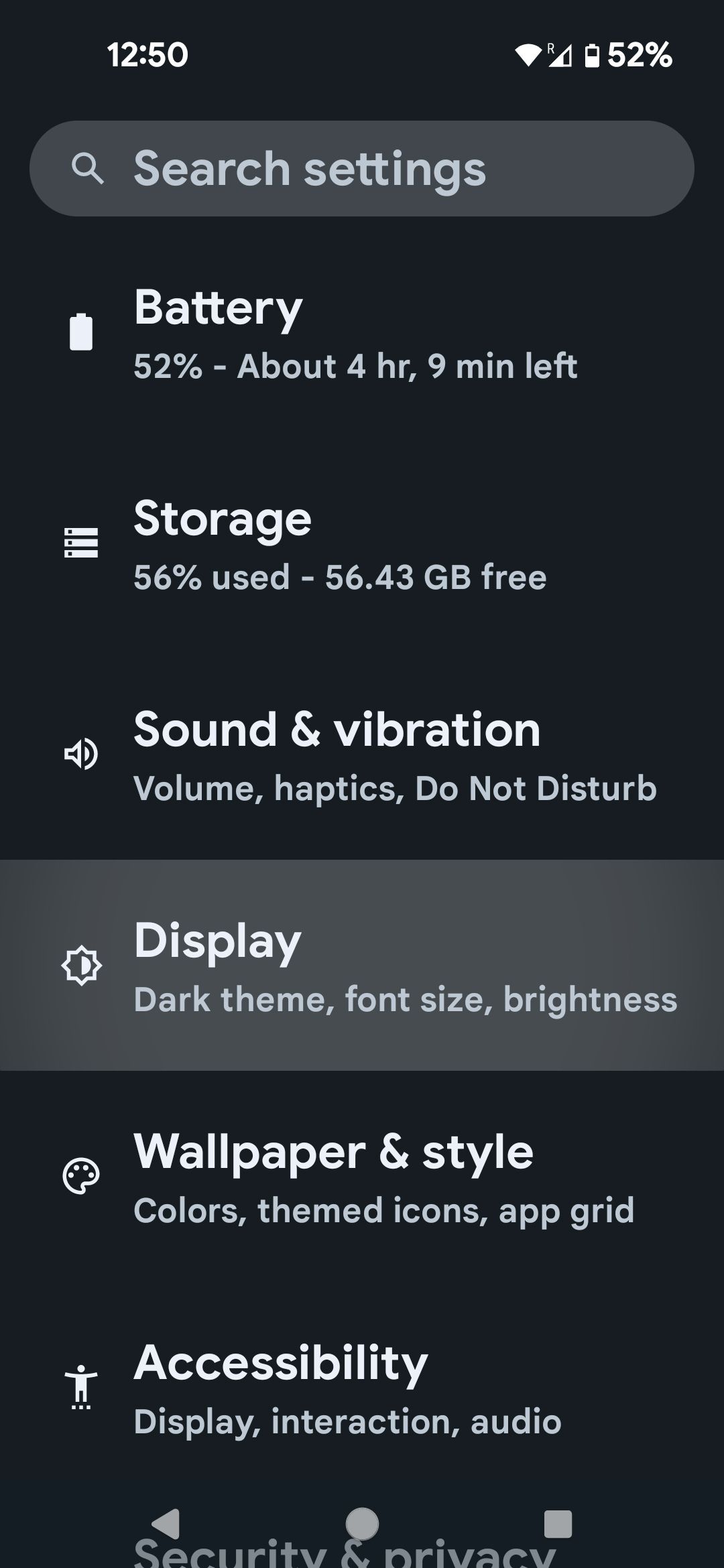
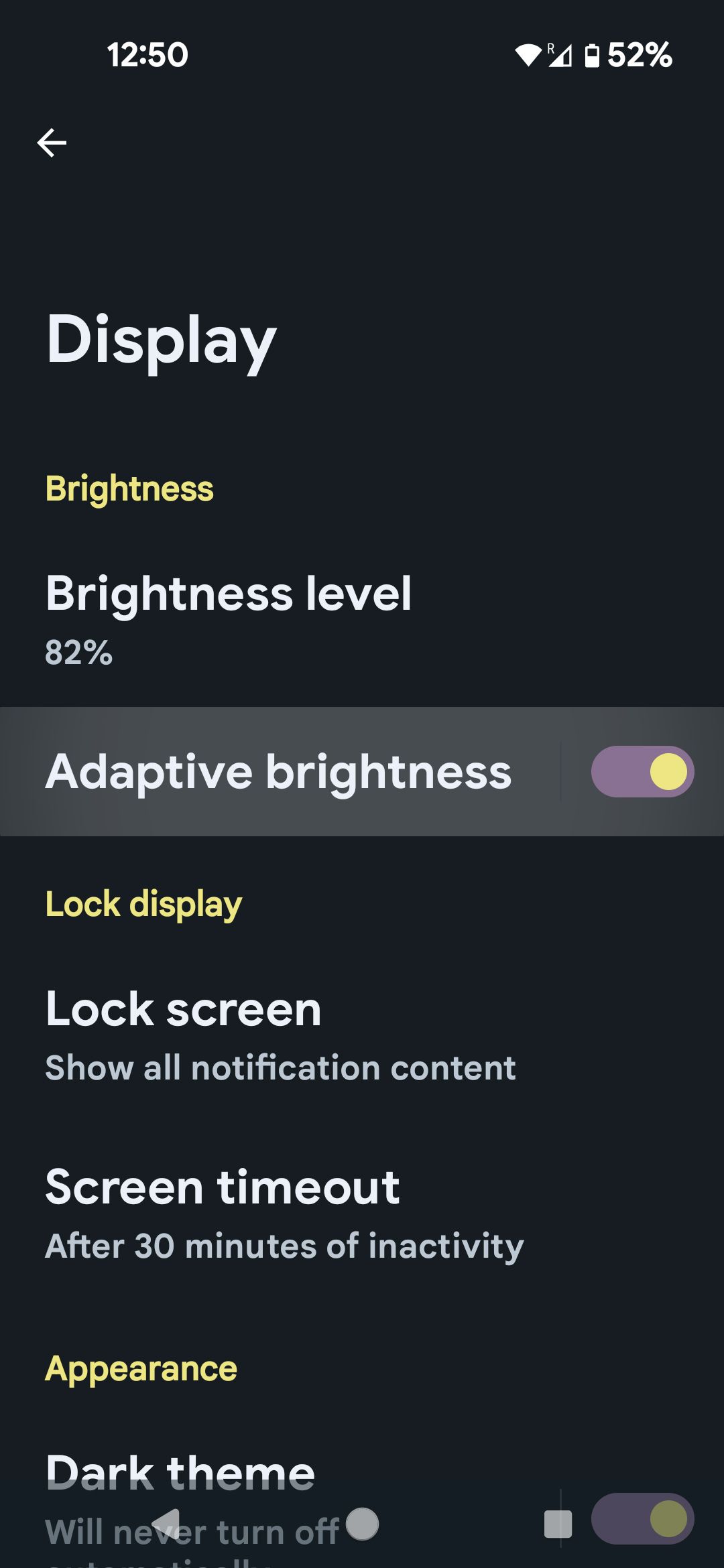
Turn off Adaptive brightness from Quick Settings
- Swipe down from the top of your screen to fully expand the Quick Settings panel.
- Tap the three-dot icon beside the brightness bar.
-
Tap the toggle button beside Adaptive brightness.
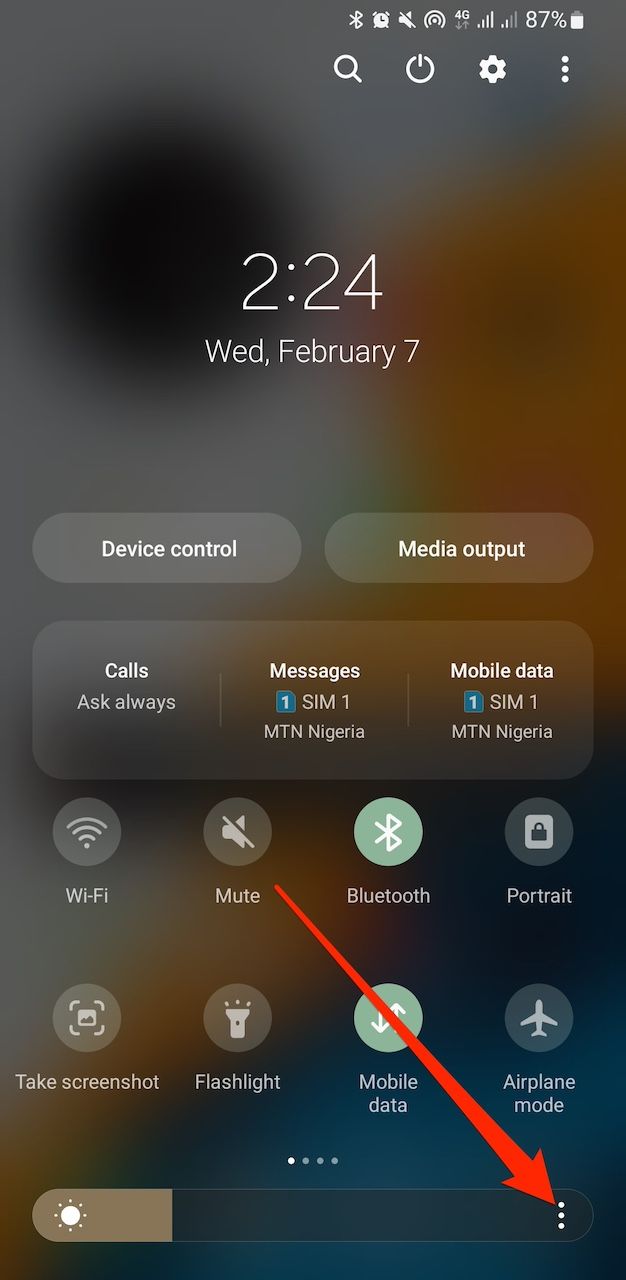
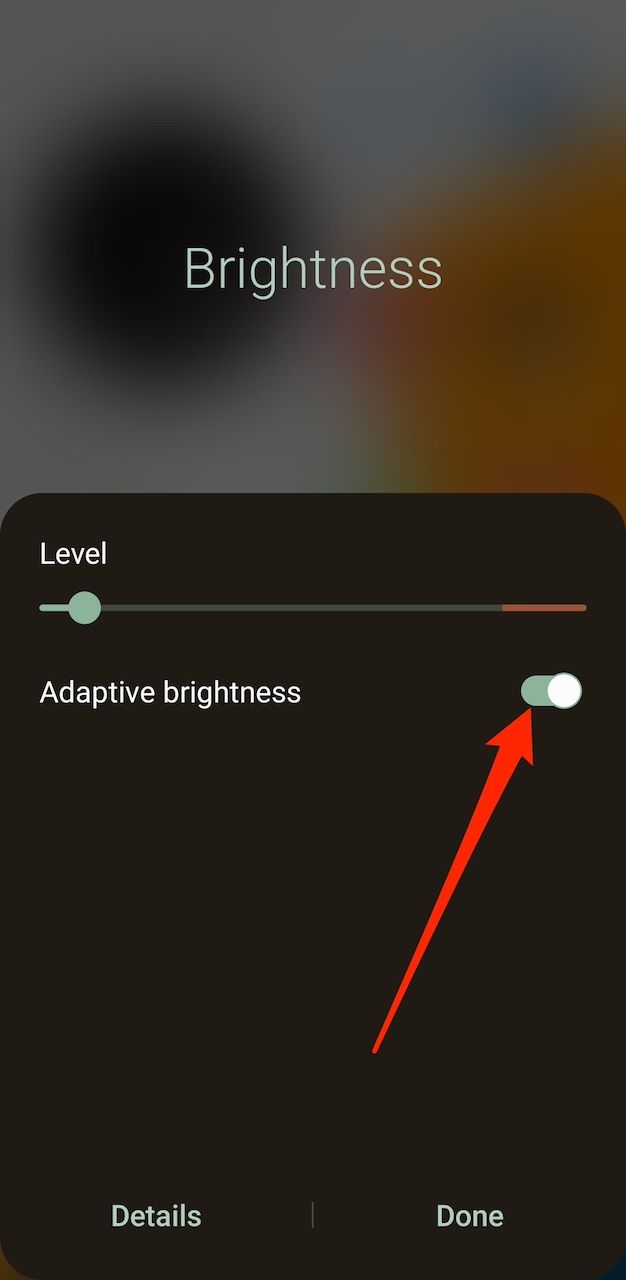
Check for Android updates
Upgrade your device to the latest Android version. It usually includes app fixes and improvements. Google lists Adaptive Brightness bug fixes in its update logs, but it occasionally omits details that affect some users.
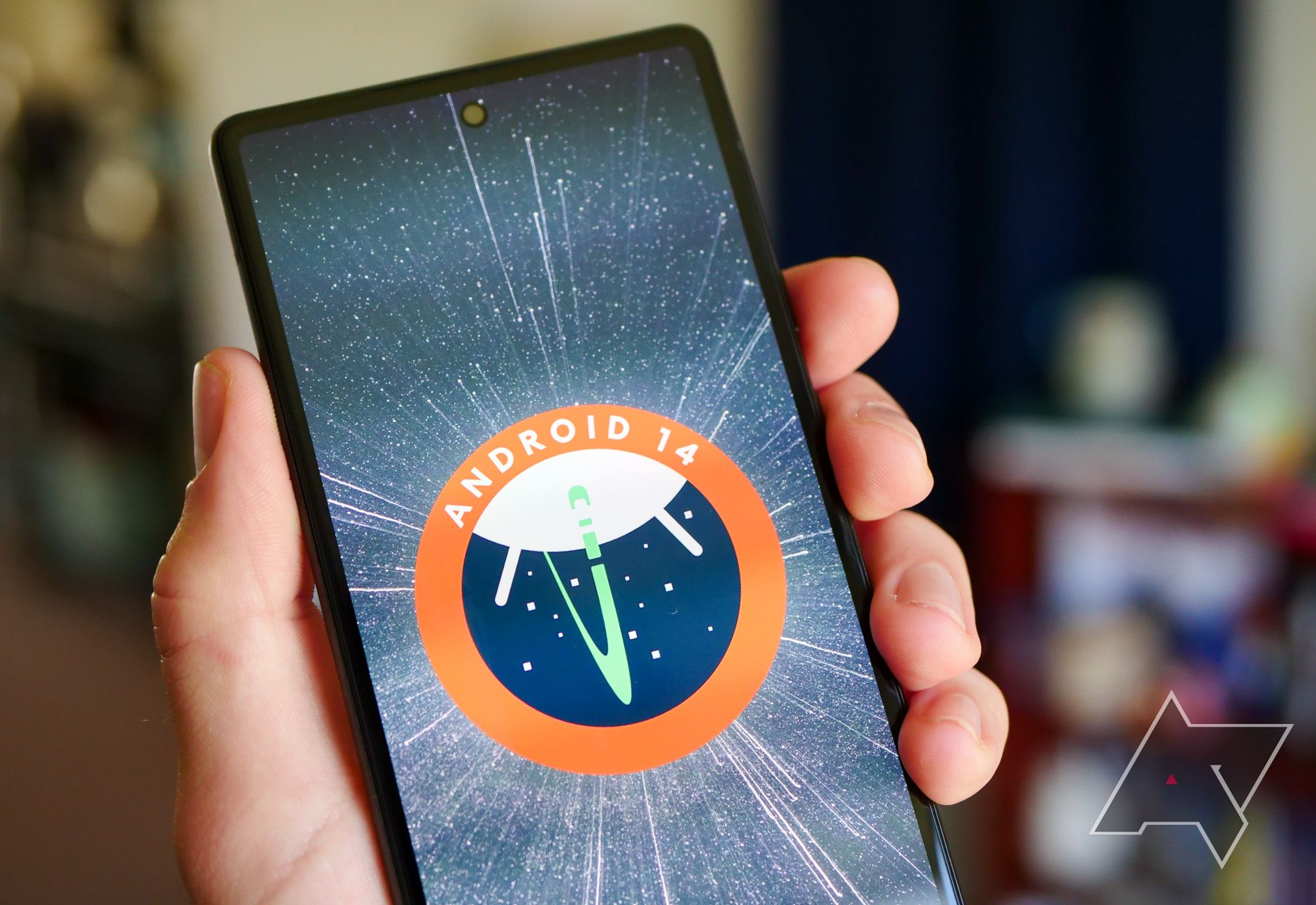
Android 14 tips and tricks: All the crucial features to try out
Here's what to do after updating your phone to Android 14These issues can cause problems beyond what you can troubleshoot. If that's the case, wait for an official fix from your device manufacturer. Ensure the issue is listed on the manufacturer's forums and mention the problem on social media. Manufacturers tend to step up the pace when there's a lot of visibility around a bug.
Brighten up your Android experience
Adaptive brightness is a useful feature when it works properly. You don't have to adjust your screen's light when outside on a sunny day, and your phone won't be overly bright in a dim room. You may not need to turn off the feature entirely after resetting it. If the feature doesn't perform to your liking, customize your Material You theme and achieve your preferred display settings.

